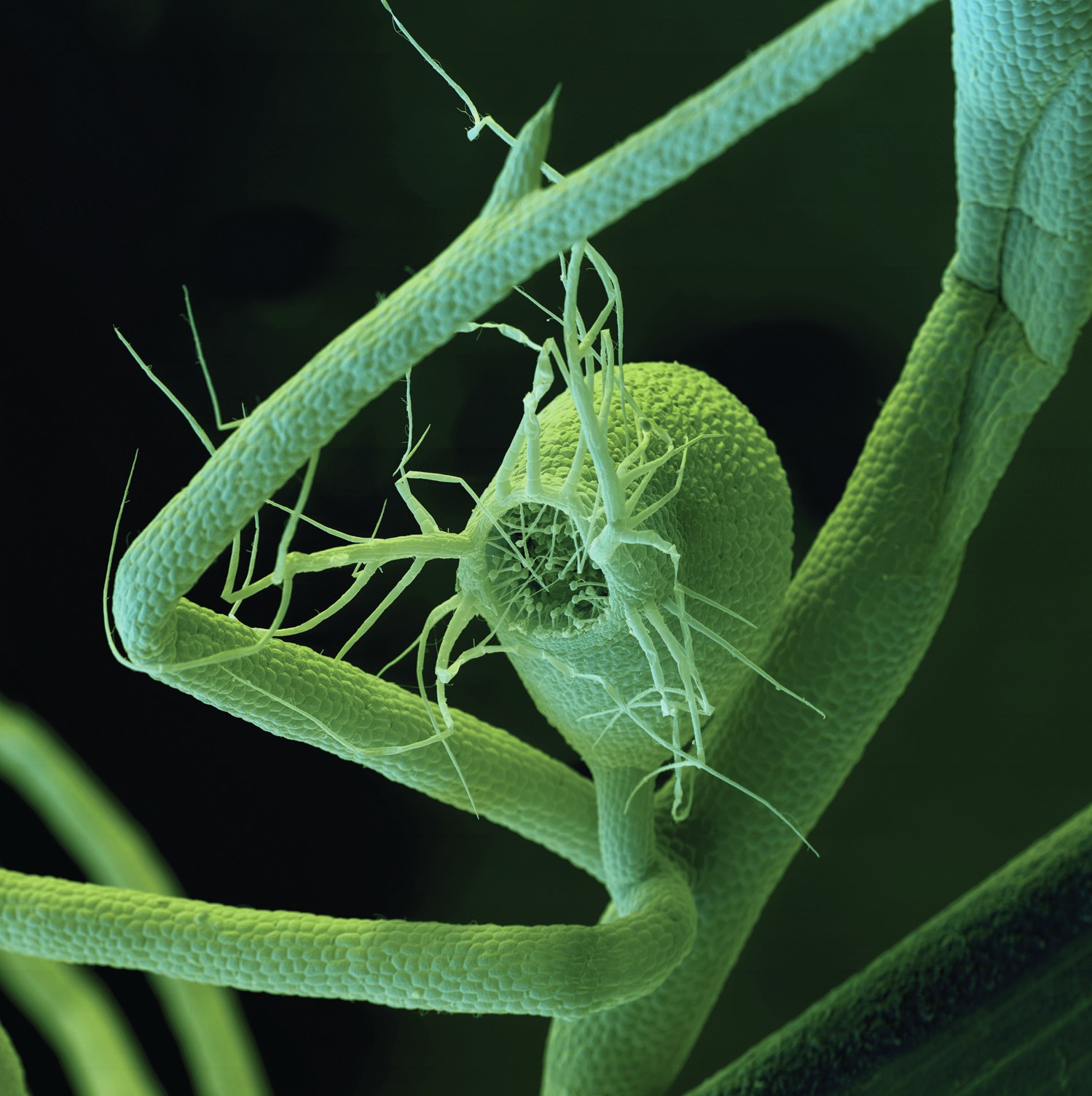
Most people have heard of carnivorous plants, such as Venus flytraps, pitcher plants and sundews. Fewer people know about bladderworts — Utricularia. Bladderworts are amazingly diverse — they inhabit every continent except Antarctica, with over 220 different species. They live in moist habitats. Some species are fully aquatic and form rafts on water. Other species are terrestrial and are capable of living on wet, bare rock faces. The growth forms are also diverse, with many species looking completely different from each other. One thing they all have in common is their small (0.1–13mm) elaborate ‘bladders’ that trap small organisms (Table 1). How, you might ask, can a small bladder trap with a tiny opening capture organisms that are larger then the trap? The answer is that animals as large as tadpoles that have a tapering tail and a soft body can be squeezed in through the entrance as they are sucked into the trap. They can even plug the door but they eventually soften and can be digested.
The trapped organisms are digested by the plant and used to supplement its nutrition. By gaining additional nutrients in this way, bladderworts are able to colonise nutrient-poor environments, such as acidic bogs. This Spotlight considers the features of these carnivorous plants, and examines why they are so successful.
Your organisation does not have access to this article.
Sign up today to give your students the edge they need to achieve their best grades with subject expertise
Subscribe




